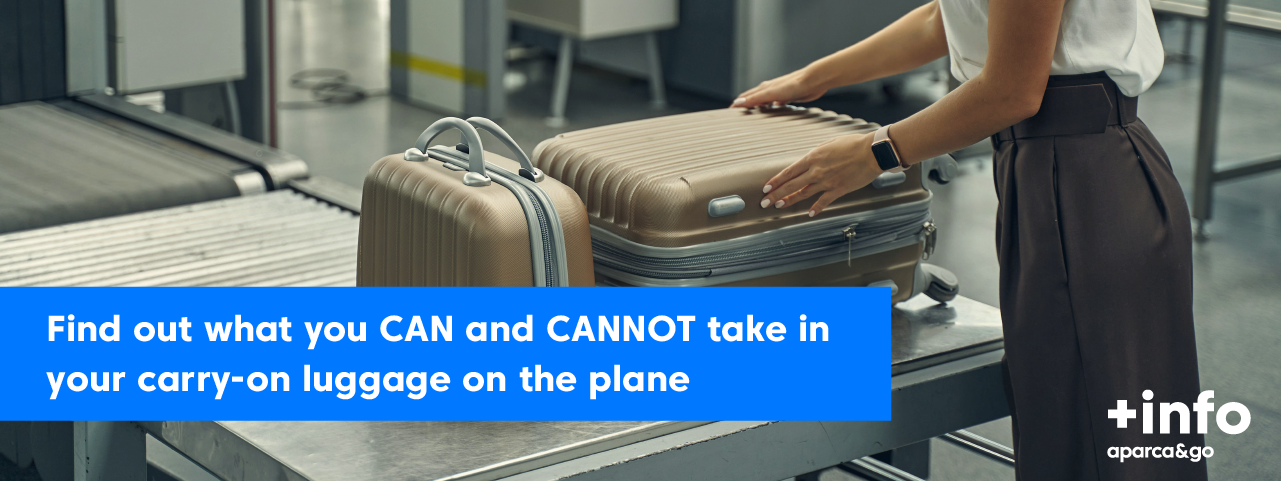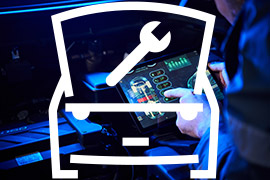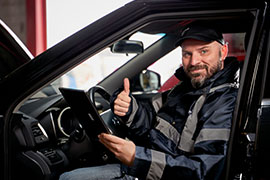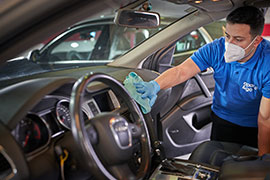Get ready for your trip: A list of what you can and can't take in your carry-on luggage.

Travelling by plane can be an exciting experience, but it can also raise some questions, especially when it comes to what you can take in your hand luggage. Can I take my lighter? And some small scissors just in case I need them? The sunscreen I bought, will they take it away? It's normal to have questions, regulations change over time and it's hard to keep track of them.
We've done the work for you and researched the current rules to avoid embarrassment when you're at the airport. In this article we explain everything you need to know about what you can and can't take in your hand luggage this summer. And since we like to make your life easier, at the end of the article you'll find a summary table.
What you CAN bring
Electronic Items
You can bring your electronic devices such as mobile phones, tablets, laptops and cameras, hairdryers, hair straighteners, razors, etc. You will only have to take them out of your suitcase and put them in a separate tray when you go through security.
You should know that there are special cases. If you are flying to the United States or the United Kingdom, you may be asked to turn on the devices to verify that they are functional and not threatening. Don't forget to carry them charged just in case.
Medicines and medical supplies
You are allowed to bring liquid and solid medications necessary for your trip. In the case of liquids, they are exempt from the restrictions on carrying liquids in hand luggage. However, it is recommended to carry the prescription or medical prescription for them.
It is also possible to bring medical devices such as inhalers, syringes, or equipment to measure blood sugar, but they must be declared and also accompanied by medical documentation. If you are travelling outside the European Union, it is best to check the conditions for the entry of medicines into that country.
Before travelling, make sure you follow this checklist:
- Take a copy of your prescription in case they require it at any time.
- Make a declaration to the airline if you are carrying more medicines than usual.
- Check the requirements of your destination country, some countries have stricter regulations.
- Take a list of the medicines and the amount you have to take, in case something happens during the flight, the staff will know what to do.
- Take enough medicines for your trip, even more, to cover unforeseen events on your trip.
- Take the medicines in their original packaging and with their leaflet.
Liquids
The regulations on liquids are still strict. You can carry liquids, gels and aerosols in your hand luggage as long as they are in individual containers of no more than 100 ml and all these containers fit comfortably in a transparent plastic bag with a hermetic seal of one litre capacity.
How should you carry them? Depending on the type of product, we make some recommendations.
- Liquids, perfumes, creams, aerosols, foams, shampoo and toothpaste: They must be in individual containers of less than 100 ml, inside a plastic bag of approximately 20 x 20 cm. Only one passenger bag can be carried and this bag must be removed from the suitcase at security control.
- Liquid medicines or special diets: Carry medical proof of the medicine or your particular condition.
- Drinks, cosmetics, perfumes, etc.: If you have bought at the airport, always carry your purchase in approved and sealed bags, with the receipt inside. You must not open it until you reach your final destination.
Food
You can carry solid food in your hand luggage. However, liquids, such as soups, sauces and drinks, are subject to the 100 ml rule. Fruits, snacks, sandwiches and other dry foods are generally allowed without problems. Alcoholic beverages are permitted as long as they are in containers of less than 100 ml and are purchased in airport duty-free shops, sealed and with the purchase receipt visible.
If you are travelling with a baby, powdered or liquid milk, sterilised water and other types of food that the baby needs are fully permitted.
Elements of driving force
Some objects necessary for movement such as crutches or canes, strollers, cots and baby chairs are permitted although they must pass through X-ray control at the airport.
What You CAN’T Bring
Sharp Objects
Sharp or pointed objects that can be used as weapons are not allowed. This includes knives, scissors with blades longer than 6 cm, and tools of any kind. Small scissors, with blades shorter than 6 cm, are allowed.
Flammable Substances
Flammable substances such a fuel, solvents, butane lighters, and fireworks are strictly prohibited. Some types of lighters and matches are allowed, but it is best to check with the airline to avoid any inconveniences.
Sporting Equipment
Sporting equipment such as baseball bats, golf clubs, ski poles, or any other object that can be used as a blunt weapon is not allowed.
Work Tools
Work tools such as hammers, wrenches, saws, and the like are prohibited in carry-on luggage. If you need to bring them, they must go in checked luggage.
We hope we have resolved those doubts that were on your mind. Although we have done extensive legwork to gather this information, please remember that each airline may have variations in their policies, so it is always advisable to check with the airline before your flight. Additionally, some airports may also have additional safety rules.
Follow these tips and regulations and enjoy a smooth trip with the peace of mind that you are complying with all safety regulations. Have a safe trip!












 " />
" />